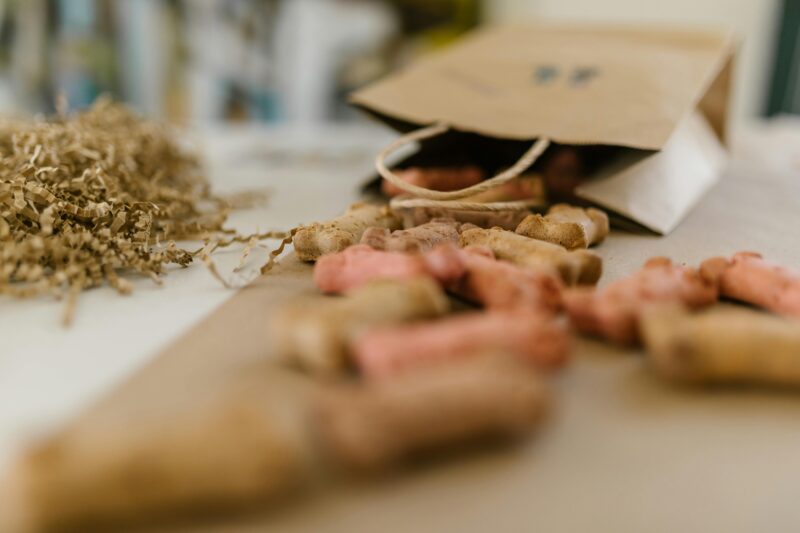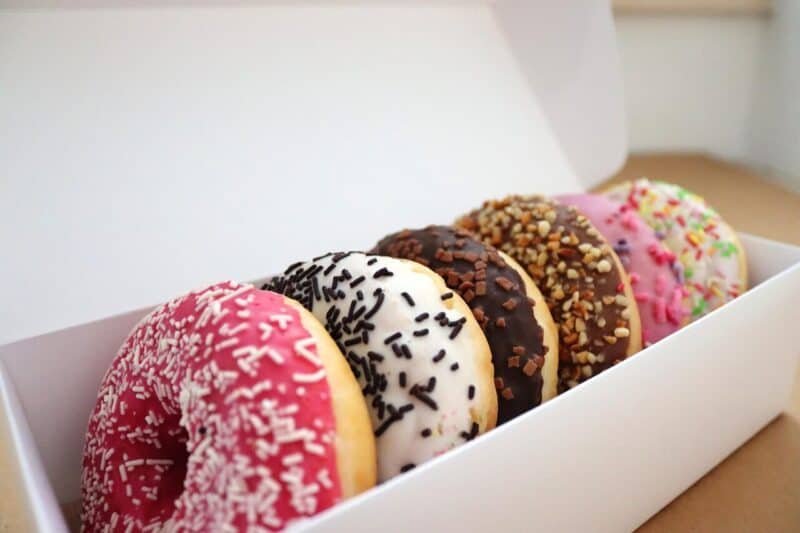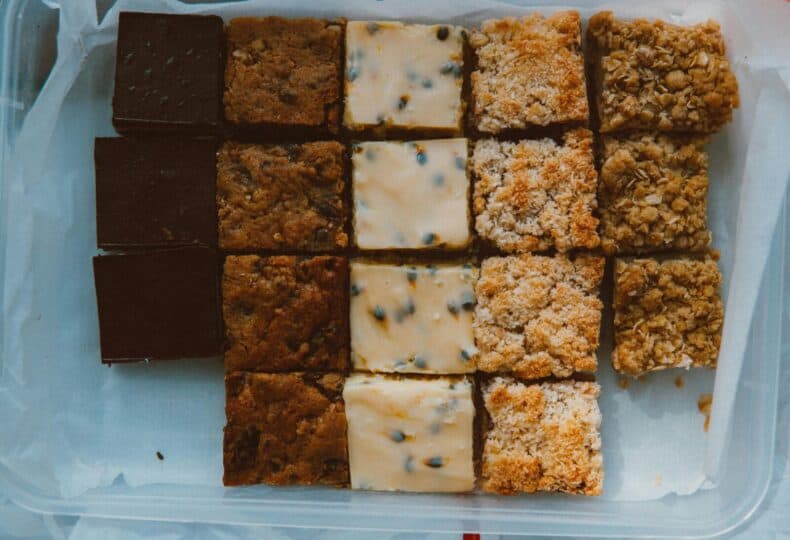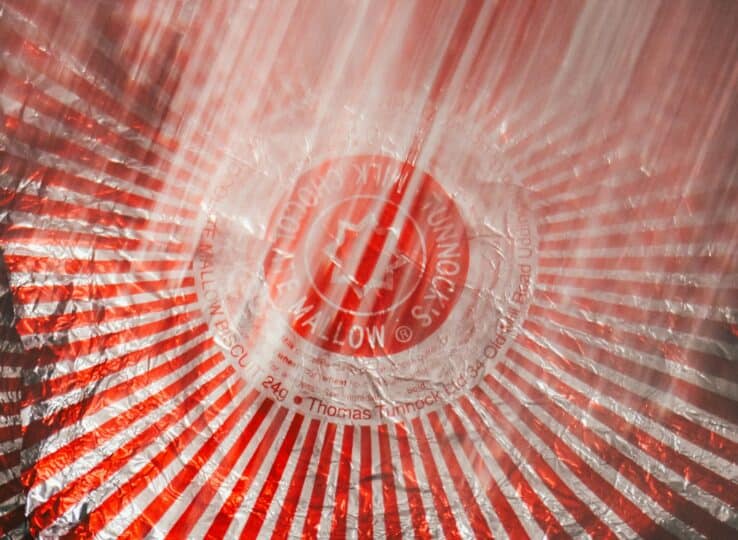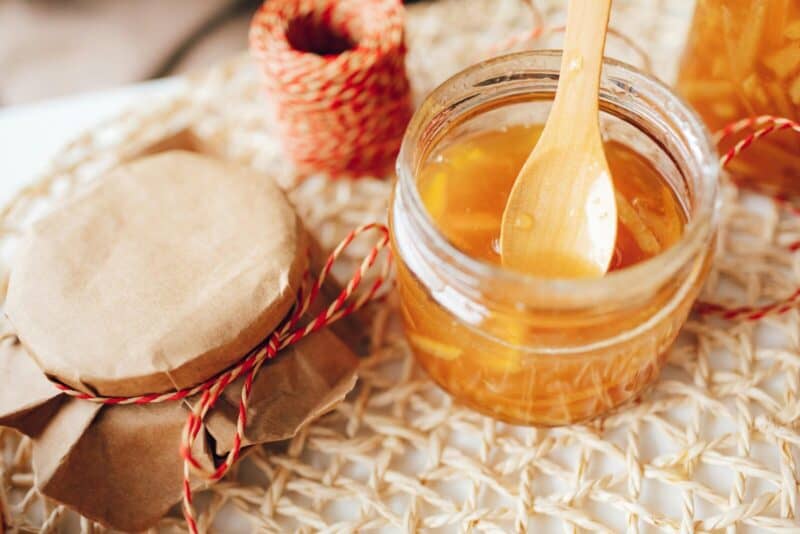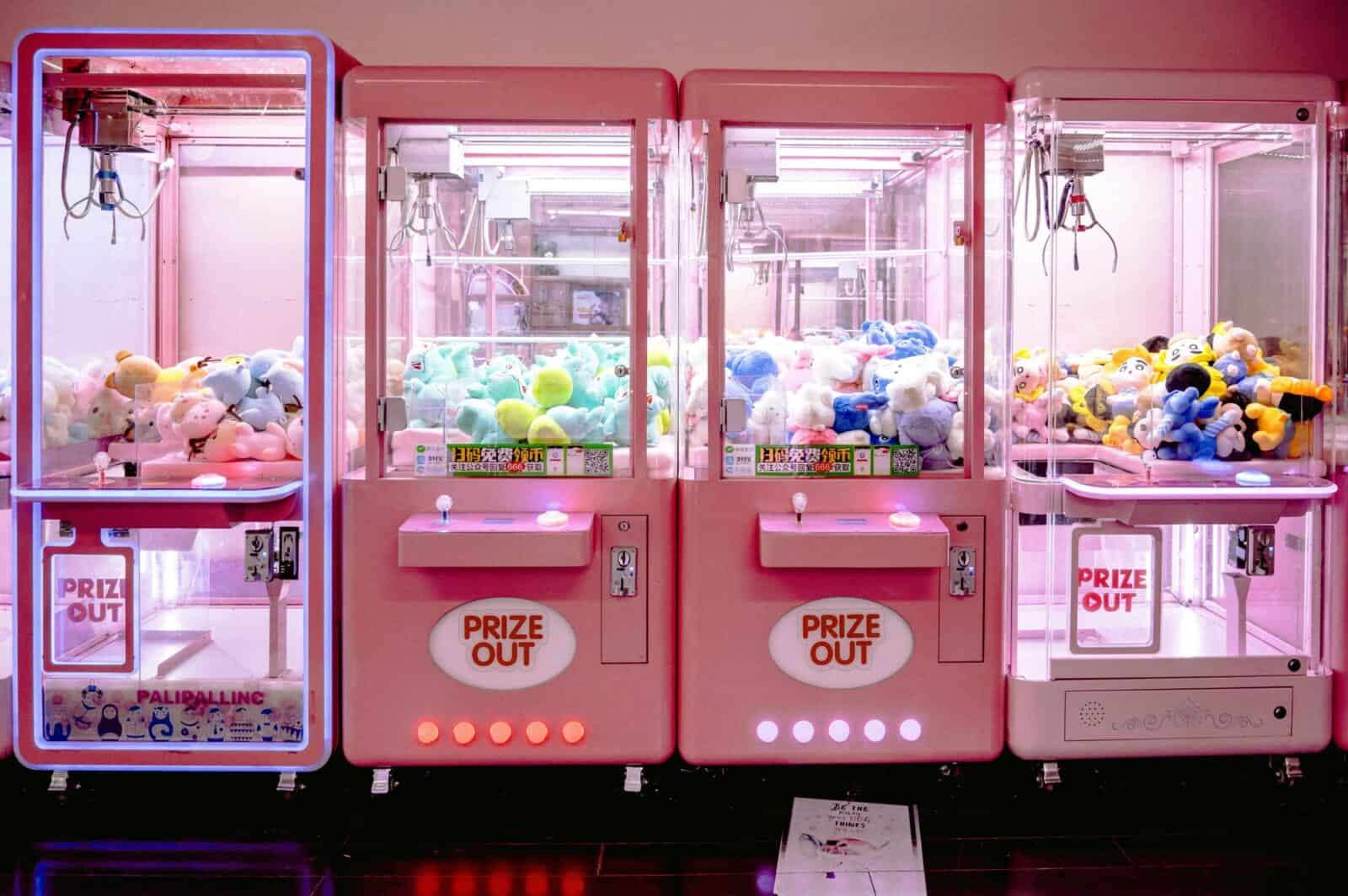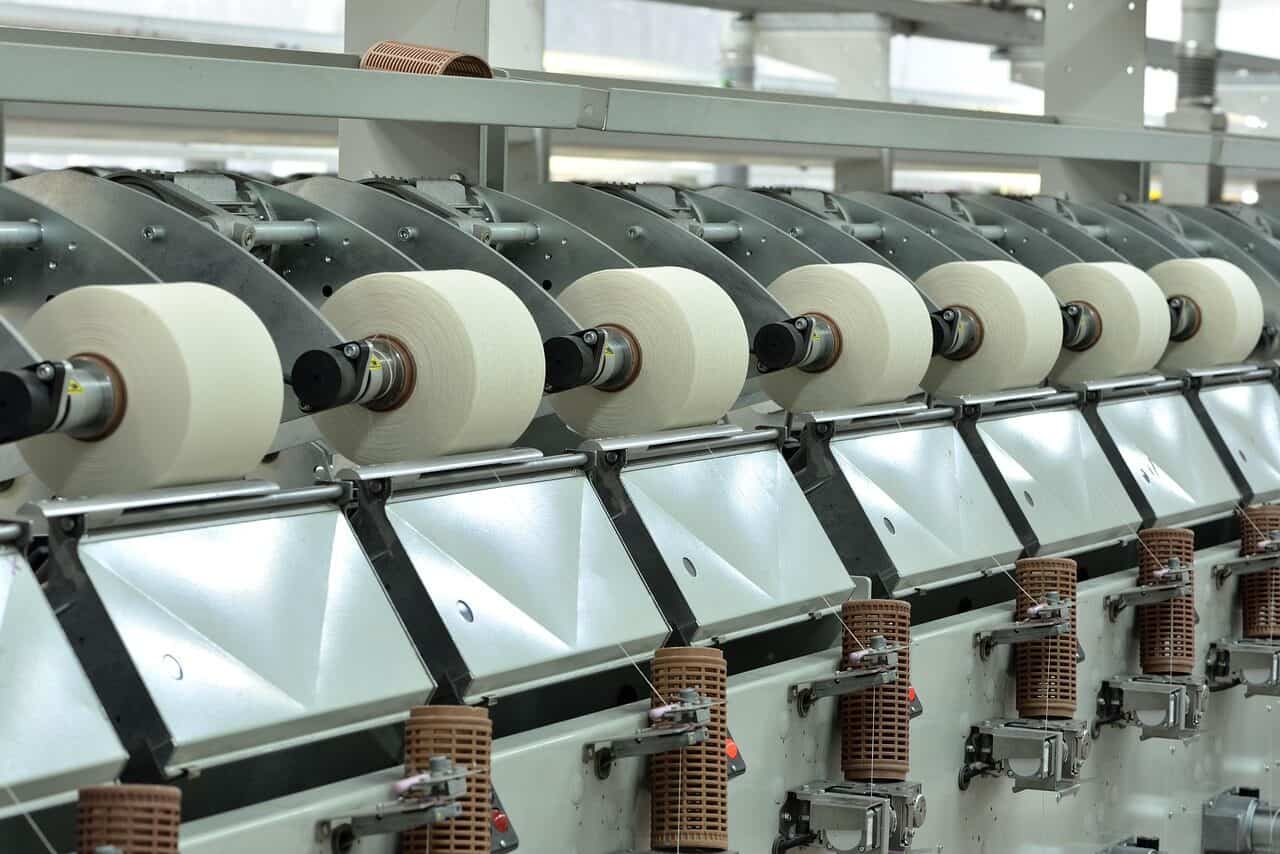Producción de envases para aperitivos: Guía del fabricante profesional
Introducción
¿Muestra realmente el envase de sus aperitivos la calidad de lo que contiene? Cuando los clientes recorren el pasillo de una tienda concurrida, su envase es lo primero que ven, y sólo dispone de unos segundos para causar una buena impresión. Esta guía le ayudará a entenderlo todo sobre la fabricación de envases para aperitivos. Como fabricantes profesionales de envases, le guiaremos paso a paso por todo el proceso. Aprenderá a elegir los materiales adecuados, a entender cómo se hacen los envases, a seguir normas importantes y a conocer las próximas tendencias. Al final, se sentirá seguro a la hora de tomar decisiones que protejan su producto y desarrollen su marca. Trataremos los materiales, cómo se fabrican, las normas que debe seguir y las tendencias futuras para ofrecerle una visión completa. Cuando termine de leer, sabrá cómo evitar errores caros y hacer que su marca destaque en las estanterías de las tiendas.
El papel en el éxito de la marca
El envasado es mucho más que una caja o una bolsa. Es una herramienta comercial inteligente que contribuye al éxito de su marca. Antes de hablar de cómo se fabrica un envase, es importante entender por qué un buen envase no es sólo un gasto, sino una inversión inteligente. El envase influye en la percepción que la gente tiene de su marca, mantiene su producto seguro y determina la percepción que los clientes tienen de su producto. Todo ello repercute directamente en sus beneficios.
Embalaje como vendedor
En el estante de una tienda, su envase funciona como su mejor vendedor. Trabaja todo el día, todos los días, para llamar la atención, mostrar su valor y convencer a la gente de que compre su producto. Un buen diseño hace que su producto destaque entre los demás. Los colores, los tipos de letra, las imágenes y las formas se combinan para mostrar la esencia de su marca. ¿Es su snack un capricho especial? ¿Un tentempié divertido para familias? ¿Una opción saludable para personas activas? Su envase cuenta esta historia incluso antes de que los clientes lean las palabras. Según el Paper and Packaging Board, 72% de los compradores afirman que el diseño del envase influye en lo que deciden comprar. Esto demuestra el poder del envase a la hora de decidir qué comprar. La función más básica del envase de un snack es proteger su contenido. Si el envase no lo hace, la calidad del producto se resiente, los alimentos se desperdician y la reputación de la marca puede quedar dañada para siempre. El objetivo principal es mantener los alimentos frescos impidiendo que el oxígeno, la humedad y la luz hagan que los alimentos se pongan rancios, se estropeen o pierdan sabor. El envase también debe ser lo bastante resistente para soportar el transporte y los desplazamientos sin aplastarse ni romperse. Esta protección ayuda a que el producto dure más tiempo en los estantes, garantizando que los clientes reciban el producto exactamente como usted lo concibió. La interacción con el envase no termina con la compra. El buen funcionamiento de su envase influye enormemente en la opinión que los clientes tienen de su marca en general. Características que solían ser extras especiales son ahora cosas que la gente espera. Las funciones de apertura fácil, como las muescas para rasgar y el rayado láser, evitan la frustración, mientras que las cremalleras resellables o los sellos de presión para cerrar mantienen los alimentos frescos después de abrirlos, lo que anima a la gente a volver a utilizar su producto y mantenerse fiel a su marca. La "experiencia unboxing", una idea que comenzó con las compras en línea pero que ahora se aplica a los productos de uso cotidiano en las tiendas, también es importante. Un envase agradable al tacto, fácil de usar y con un aspecto atractivo refuerza la calidad de su producto y crea una experiencia positiva y memorable que puede convertir a alguien que prueba su producto una vez en un cliente de por vida. Elegir el material adecuado es una de las decisiones más importantes en la producción de envases para aperitivos. Esta elección lo afecta todo, desde cuánto tiempo se mantiene fresco su producto y cuánto cuesta hasta cómo ven los clientes su producto y su impacto en el medio ambiente. Para tomar una decisión inteligente, debe conocer las características, usos y ventajas y desventajas de los principales tipos de materiales. Vamos a desglosar las opciones más comunes para que pueda elegir con claridad. Los envases flexibles, que incluyen bolsas y films, son el caballo de batalla de la industria actual de los aperitivos. Su versatilidad, ligereza y excelente capacidad para mostrar gráficos lo convierten en la mejor opción. Los tipos más comunes son las bolsas autoportantes, que quedan muy bien en los estantes; las bolsas almohadilla, rentables para productos como las patatas fritas; y las bolsas planas, que suelen utilizarse para porciones más pequeñas como la cecina o los caramelos. Suelen fabricarse a partir de varias capas combinadas, con materiales como poliéster (PET) para la impresión y resistencia, polietileno (PE) para el sellado y, a veces, capas metalizadas o de lámina para mejorar las propiedades de barrera.
Rígido y semirrígido
Los formatos rígidos y semirrígidos clásicos siguen siendo esenciales para usos específicos. En esta categoría se incluyen los cartones plegables, los botes de cartón y las cajas rígidas de regalo. Su principal ventaja es la resistencia estructural, lo que las convierte en la opción perfecta para proteger aperitivos frágiles como galletas saladas, patatas fritas apiladas o galletas delicadas. El cartón ofrece una sensación premium y táctil, y a menudo se considera una opción más tradicional o de gama alta. Estos formatos ofrecen superficies grandes y planas, perfectas para la marca y la información nutricional, y a menudo se utilizan junto con un revestimiento interior flexible para garantizar la frescura del producto.
Opciones sostenibles
La demanda de envases sostenibles ya no es sólo una pequeña tendencia, pero una consideración fundamental. La industria está creando rápidamente nuevas soluciones para satisfacer esta demanda. Los materiales reciclables son un objetivo primordial, con un impulso significativo hacia las estructuras monomateriales, como las bolsas totalmente de PE, que pueden procesarse en un único flujo de reciclado. Los materiales compostables, a menudo fabricados a partir de plásticos vegetales como el ácido poliláctico (PLA), ofrecen una solución al final de su vida útil para determinadas aplicaciones, aunque suelen requerir instalaciones industriales de compostaje. Otra estrategia clave es el uso de contenido reciclado postconsumo (PCR), que reduce la dependencia de nuevos materiales y apoya una economía circular.
Comparación entre fabricantes de materiales de envasado de aperitivos
Para facilitar el proceso de selección, hemos elaborado una tabla comparativa con las principales características de cada tipo de material.
| Tipo de material | Estructuras comunes | Lo mejor para... | Pros | Contras |
| Plásticos flexibles | PET/PE, MET-PET/PE | Patatas fritas, frutos secos, cecina, caramelos | Excelente barrera, ligereza, gráficos de gran impacto, formas versátiles. | A menudo multimaterial, más difícil de reciclar. |
| Papel/Cartón | Cajas plegables, botes | Galletas saladas, galletas, granola | Reciclable, tacto premium, buena estructura. | Mala barrera contra la humedad sin revestimiento, más pesada. |
| Aluminio | Laminados, latas | Nueces, Café, Necesidades de alta barrera | Barrera inigualable (luz, oxígeno, humedad), larga vida útil. | Coste más elevado, producción intensiva de energía. |
| Bioplásticos (PLA) | Películas/bolsas a base de PLA | Aperitivos secos con una vida útil más corta | Compostable (en instalaciones industriales), de origen vegetal. | Propiedades de barrera inferiores, sensibles al calor. |
El proceso de producción
Convertir una idea de diseño en un envase físico implica un proceso de fabricación en varias fases que requiere precisión, experiencia y un estrecho trabajo en equipo. Comprender este proceso le ayudará a saber lo que ocurre en la fábrica, a planificar eficazmente los plazos del proyecto y a comunicarse más claramente con su socio fabricante. A continuación le explicamos paso a paso cómo se hace realidad el envase de sus aperitivos.
Fase 1: Diseño y creación de prototipos
Esta primera fase es un trabajo de equipo entre su marca y nuestro equipo de ingeniería. Comienza con su idea, que convertimos en una línea de diseño técnica: un plano en 2D de la estructura del envase, incluidas las dimensiones, los pliegues y la ubicación de las costuras. Una vez aprobada la línea de diseño, creamos una prueba digital para colocar el material gráfico. Al mismo tiempo, podemos hacer un prototipo físico sin imprimir. Esta muestra estructural le permite probar el tamaño, la forma y la funcionalidad (como cremalleras y muescas de rasgado) con su producto real, garantizando un ajuste perfecto antes de comprometerse con la producción completa.
Etapa 2: Preimpresión y planchas
Una vez finalizado el diseño, se pasa a la fase de preimpresión. Nuestros especialistas revisan los archivos, ajustan los colores y se aseguran de que todos los elementos funcionen bien con el método de impresión elegido. A continuación, el material gráfico se divide en los colores que lo componen. Para cada color se crea una plancha de impresión (para flexografía) o un cilindro grabado (para huecograbado). Se trata de un proceso de preparación crítico que se realiza una sola vez. La precisión de estas planchas o cilindros determina directamente la nitidez y precisión de la impresión final.
Fase 3: Tecnología de impresión
Según nuestra experiencia, la elección de la tecnología de impresión es una de las decisiones más importantes en cuanto a costes y calidad. Guiamos a nuestros clientes en esta elección en función de su volumen y la complejidad del diseño. En el envasado de aperitivos se utilizan tres tecnologías principales, cada una con ventajas distintas.
| Tecnología | Lo mejor para... | MOQ | Calidad de impresión | Perfil de costes |
| Impresión digital | Tiradas cortas, multi-SKU, prototipos, personalización | Muy bajo (por ejemplo, <5.000 unidades) | Excelente, fotorrealista | Alto coste por unidad, sin costes de placa. |
| Flexografía (Flexo) | Recorridos medios y largos | Mediana (por ejemplo, 5.000-10.000+ unidades) | Muy bueno, excelente para colores planos | Coste medio por unidad y moderado por plato. |
| Huecograbado (Gravure) | Tiradas muy largas, máxima exigencia de calidad | Muy alto (por ejemplo, más de 25.000 unidades) | Superior, mejor para degradados y metalizados | Bajos costes por unidad y cilindro muy altos. |
Etapa 4: Laminación y acabado
En la mayoría de los envases flexibles para aperitivos, la película impresa es sólo una capa de la estructura final. En la fase de laminación, utilizamos adhesivos para unir el film impreso a otras capas de material, como films barrera o bandas selladoras. Este proceso crea un material compuesto con las propiedades de protección, resistencia y capacidad de sellado deseadas. Tras la laminación, puede aplicarse un revestimiento de acabado a la superficie. Puede ser un barniz brillante para un aspecto vibrante, un acabado mate para una sensación sofisticada y moderna, o un revestimiento suave al tacto para una experiencia táctil única.
Etapa 5: Conversión y formación
Aquí es donde los rollos de material impreso y laminado se transforman en su formato final. Durante el proceso de transformación, los rollos se cortan a la anchura adecuada y se introducen en maquinaria especializada. En el caso de las bolsas, esta máquina da forma al material, termosella las costuras y puede añadir elementos como cremalleras, muescas para rasgar o agujeros para colgar. Para las cajas plegables, el cartón impreso se troquela y se marca antes de ser plegado y encolado en su forma final. Se trata de una fase de alta velocidad y precisión.
Etapa 6: Control de calidad
Un riguroso control de calidad no es un paso aislado, sino un proceso continuo integrado en toda la producción. Nuestro compromiso es garantizar que cada envase cumpla exactamente sus especificaciones. En cada fase -impresión, laminado y conversión- comprobamos la precisión del color de impresión con respecto a las normas aprobadas, la resistencia a la delaminación, la integridad del sellado, la corrección dimensional y la funcionalidad de las características. Las bolsas terminadas se someten a pruebas de rotura y caída para garantizar que funcionarán de forma fiable desde nuestras instalaciones hasta las manos del consumidor.
Aplicaciones y conformidad
Los principios del buen diseño y producción de envases debe adaptarse a las necesidades únicas de las distintas categorías de aperitivos. Lo que funciona para una bolsa de patatas fritas no es adecuado para una barrita de proteínas. Al mismo tiempo, todos los envases deben cumplir estrictas normas de seguridad alimentaria. Demostrar experiencia tanto en los requisitos específicos de cada categoría como en el cumplimiento universal es el sello distintivo de un socio fabricante profesional.
Envasado para categorías de aperitivos
- Aperitivos salados (patatas fritas, pretzels): Los principales retos son evitar la rotura y mantener la textura crujiente. El envasado necesita excelentes barreras contra la humedad y el oxígeno. El lavado con nitrógeno -el proceso de sustituir el oxígeno de la bolsa por gas nitrógeno inocuo justo antes del sellado- es un método muy eficaz. práctica habitual para amortiguar el producto y evitar la ranciedad.
- Frutos secos: Estos productos pueden desarrollar aceite rancio (en los frutos secos) y apelmazarse por la humedad (en la fruta deshidratada). Los envases de alta barrera, que a menudo incluyen una capa metalizada o de aluminio, son cruciales para bloquear la luz y el oxígeno. En el caso de los frutos secos de primera calidad, los consumidores valoran mucho la posibilidad de volver a cerrar el envase.
- Confitería y golosinas: El atractivo visual es lo más importante. Son populares las películas de alta claridad que muestran el producto, así como los gráficos vibrantes y brillantes. El material también debe proteger contra la fusión y el pegado, lo que puede requerir adhesivos de sellado en frío que se aplican con presión en lugar de calor.
- Barritas sanas y proteínicas: Estos productos necesitan un envase resistente. Las barritas suelen ser densas y pueden tener esquinas afiladas, por lo que requieren sellados fuertes y una alta resistencia a la perforación para evitar fallos del envase durante el transporte. El flow wrap forrado con lámina es un formato estándar, que proporciona una excelente barrera en un formato compacto.
Conformidad alimentaria
El término "apto para uso alimentario" es una base de confianza innegociable. En el envasado, significa que todas las partes del envase que pueden entrar en contacto con el alimento -incluidos los sustratos materiales, las tintas, los adhesivos y los revestimientos- están certificadas como seguras para el contacto directo con los alimentos. No deben transferir ninguna sustancia nociva al producto alimenticio.
Se rige por organismos reguladores. En Estados Unidos, la Administración de Alimentos y Medicamentos (FDA) establece las normas, mientras que en Europa, la Autoridad Europea de Seguridad Alimentaria (EFSA) es el principal organismo regulador. Un fabricante reputado debe poder aportar documentación y certificaciones que demuestren que sus materiales y procesos cumplen estas normativas. Cuando verifique a un socio, pida siempre ver sus certificaciones de seguridad alimentaria, como BRCGS (Brand Reputation Compliance Global Standards) o SQF (Safe Quality Food). Estas certificaciones demuestran un compromiso con la seguridad y la calidad que va más allá del simple cumplimiento.
Elegir un socio fabricante
Seleccionar al fabricante adecuado es posiblemente la decisión más importante que tomará en su viaje hacia el envasado. Un gran socio actúa como un consultor experto, guiándole a través de las complejidades y ayudándole a evitar problemas. Un mal socio puede provocar retrasos, sobrecostes y un producto final que no cumpla las expectativas. He aquí una práctica lista de comprobación que le ayudará a evaluar a sus posibles socios y a tomar una decisión segura.
Investigación de las capacidades básicas
Antes de mantener conversaciones detalladas, evalúe las capacidades básicas de un socio potencial. Este examen inicial puede ahorrar mucho tiempo.
- Experiencia interna: ¿Disponen de ingenieros especializados en envasado, especialistas en preimpresión y equipos de control de calidad? Un socio con profundos conocimientos internos puede ofrecer una valiosa orientación sobre la selección de materiales, el diseño estructural y la optimización de costes, en lugar de limitarse a ejecutar un pedido.
- Certificaciones: Las certificaciones son la validación por terceros de la calidad y la seguridad. Busque certificaciones reconocidas mundialmente normas de seguridad alimentaria como BRCGS o SQF. Para la gestión del color, una certificación GMI (Graphic Measures International) indica un alto nivel de consistencia de la impresión. Las certificaciones ISO (por ejemplo, ISO 9001) hablan de sus sistemas generales de gestión de la calidad.
- Tecnología y equipamiento: ¿Se ajustan sus capacidades a sus necesidades? Si necesita una tirada corta con varios diseños, ¿ofrecen impresión digital? Si necesita la máxima calidad para una tirada masiva, ¿tienen capacidad de huecograbado? Asegúrese de que su equipo de conversión puede producir el formato y las características que desea (como tipos de cremallera específicos o rayado láser).
Preguntas fundamentales
Una vez hecha la preselección, hay que profundizar. La calidad de sus respuestas a estas preguntas revelará su nivel de experiencia y su enfoque de la asociación.
- ¿Puede explicarme su proceso de control de calidad, concretamente en las fases de impresión y transformación?
- ¿Cómo ayuda a sus clientes en la transición hacia materiales de envasado más sostenibles? ¿Puede dar ejemplos?
- ¿Cuál es su proceso de incorporación de un nuevo cliente y su proyecto?
- ¿Cómo se gestiona una situación en la que una tirada no cumplen la norma de color aprobada?
- ¿Puede describir sus procedimientos de abastecimiento y seguimiento de materias primas?
- ¿Qué nivel de asistencia técnica podemos esperar de su equipo durante la fase de diseño y creación de prototipos?
- ¿Cómo se gestionan los plazos de producción y se comunican los posibles retrasos?
Entender las finanzas: Un ejemplo de estructura de costes
Los costes de embalaje pueden ser confusos. Un socio transparente estará encantado de desglosar sus precios. He aquí una estructura de costes típica.
| Componente de coste | Qué es | Cómo se calcula | Consejo de optimización |
| Precio por unidad | El coste de cada bolsa o caja individual. | Coste total de ejecución / número de unidades. | Disminuye significativamente con un mayor volumen. |
| Tasas únicas por placa/cilindro | El coste de crear sus planchas o cilindros de impresión exclusivos. | Según el número de colores y la tecnología de impresión. | Reduzca al mínimo el número de colores en su diseño si tiene un presupuesto ajustado. |
| Envíos y fletes | El coste del transporte del envase acabado hasta usted. | En función del peso, el volumen y la distancia. | Pregunte si el fabricante puede almacenarle algunas existencias. |
| Cantidad mínima de pedido (MOQ) | El volumen de pedido más pequeño que producirá el fabricante. | Establecido por la economía de la configuración de la máquina. | Pregunte por la posibilidad de combinar tiradas o de utilizar la impresión digital para necesidades más pequeñas. |
Futuras tendencias de envasado
El panorama del envasado de aperitivos evoluciona constantemente, impulsado por la tecnología, el comportamiento de los consumidores y los requisitos de sostenibilidad. Adelantarse a estas tendencias no es sólo cuestión de parecer moderno; es una necesidad estratégica que puede proporcionar una ventaja competitiva significativa. Estas son las tendencias clave que marcarán el futuro del sector.
Envases inteligentes
Los envases están dejando de ser un contenedor estático para convertirse en un portal digital dinámico. Los envases inteligentes utilizan la tecnología para mejorar la interacción con el consumidor y proporcionar datos valiosos. Los códigos QR son el punto de entrada más accesible, ya que permiten a las marcas vincular a los consumidores con la historia de su marca, información detallada del producto, recetas o contenido promocional con un simple escaneo. Yendo más allá, los chips de comunicación de campo cercano (NFC) integrados en el envase pueden poner en marcha experiencias interactivas, verificar la autenticidad o incluso facilitar la realización de nuevos pedidos con un simple toque de un teléfono inteligente.
Personalización y agilidad
El enfoque único del envasado está desapareciendo. El auge de la impresión digital ha generado una agilidad sin precedentes que permite a las marcas dejar atrás las tiradas masivas de un solo diseño. Esto permite la hiperpersonalización, en la que los envases pueden adaptarse a eventos específicos, regiones o incluso consumidores individuales. Ahora las marcas pueden producir de forma económica ediciones limitadas, diseños de temporada y probar diferentes conceptos de envasado en el mercado. Esta agilidad permite responder más rápidamente a las tendencias de los consumidores y realizar campañas de marketing más específicas y eficaces.
Economía circular
La tendencia más significativa a largo plazo es el cambio de un modelo lineal "tomar-hacer-desechar" a una economía circular. En los envases, esto se manifiesta en dos áreas clave. El primero es el "diseño para el reciclado", que implica un cambio fundamental hacia estructuras monomateriales (como las bolsas de polietileno) que pueden clasificarse y reciclarse fácilmente dentro de la infraestructura existente. El segundo es explorar modelos de envases rellenables y reutilizables. Aunque todavía son nuevos para muchas categorías de aperitivos, los sistemas de contenedores a granel con envases reutilizables y los modelos directos al consumidor con envases retornables están ganando terreno, lo que representa un cambio importante en la forma de ver el ciclo de vida de un envase.
Innovaciones materiales
La ciencia de los materiales está en el centro del futuro de los envases. Investigadores y fabricantes desarrollan activamente materiales de nueva generación para resolver la disyuntiva entre rendimiento y sostenibilidad. Esto incluye soluciones de papel de alta barrera que pretenden sustituir a los plásticos multicapa en determinadas aplicaciones. También estamos viendo avances en películas diseñadas específicamente para procesos de reciclado avanzado o químico, que pueden descomponer los plásticos en sus componentes moleculares originales para renacer como material de calidad virgen. Estas innovaciones son fundamentales para crear un ecosistema de envasado verdaderamente circular y sostenible.
Conclusión
Crear un envase excepcional para aperitivos es un viaje que combina arte, ciencia y estrategia. Requiere una visión completa, tratando el envase no como una ocurrencia tardía o un elemento de coste, sino como un componente central de su producto y marca. Si comprende los elementos críticos de este proceso, podrá tomar decisiones más inteligentes y estratégicas que le reportarán un gran retorno de la inversión.
- El envase es un activo estratégico, no sólo un coste. Es su vendedor silencioso, el guardián de su producto y un punto de contacto clave en la experiencia del consumidor.
- La elección del material determina el rendimiento y la percepción. La selección de materiales flexibles, rígidos o sostenibles tiene un efecto en cascada sobre la vida útil, el coste y la imagen de marca.
- Un proceso de producción transparente, paso a paso, es conocible y manejable. Desde el diseño y la impresión hasta la conversión y el control de calidad, cada etapa es un punto de control crítico en el camino hacia el éxito del lanzamiento del producto.
- El éxito depende de una asociación sólida y colaborativa con el fabricante. El socio adecuado actúa como un guía experto, ayudándole a sortear la complejidad y alcanzar su visión.
Siguiendo esta guía, usted ya no es sólo un cliente; es un socio informado, preparado para participar con confianza en el proceso de producción. Estará preparado para hacer las preguntas adecuadas, evaluar sus opciones de forma crítica y trabajar con eficacia para crear envases que protejan su producto, cautiven a sus clientes e impulsen su marca.
Preguntas frecuentes
¿Cuál es el plazo de entrega habitual?
El plazo de entrega de los envases personalizados para aperitivos varía en función de la tecnología de impresión. Desde el momento en que se aprueba su diseño final, puede esperar entre 4 y 6 semanas para la impresión digital y entre 6 y 9 semanas para métodos tradicionales como la flexografía o el huecograbado. Esto no incluye el tiempo de envío. La configuración inicial, incluida la creación de planchas o cilindros para flexografía y huecograbado, supone una parte significativa de este plazo de entrega en el primer pedido.
¿Por qué existen las cantidades mínimas?
Las cantidades mínimas de pedido (CMP) existen por razones económicas. En el caso de métodos de impresión como la flexografía y el huecograbado, la preparación de la máquina, el montaje de las planchas y la obtención de los colores correctos implican un gasto considerable de tiempo, mano de obra y material. Estos costes fijos de preparación son demasiado elevados para repartirlos en tiradas muy pequeñas, lo que encarecería demasiado el precio por unidad. Las cantidades mínimas de producción garantizan que cada tirada sea económicamente viable tanto para el fabricante como para el cliente.
¿CMYK frente a colores Pantone?
CMYK y Pantone (PMS) son dos sistemas de color diferentes. CMYK (Cyan, Magenta, Yellow, Black) crea colores mezclando estas cuatro tintas base en pequeños puntos, de forma similar a una impresora de inyección de tinta de sobremesa. Es ideal para imprimir imágenes fotorrealistas. Los colores Pantone Matching System (PMS) son tintas sólidas premezcladas. Cada color Pantone tiene una fórmula única, lo que garantiza una consistencia absoluta. El uso de un color PMS es crucial para igualar con precisión un color de marca específico cada vez que se imprime, en cualquier parte del mundo.
¿Puedo conseguir un prototipo?
Sí, obtener un prototipo es una parte estándar y muy recomendable del proceso. Podemos ofrecerle dos tipos principales. Un prototipo estructural no impreso es una maqueta física hecha con el material real, que le permite probar el tamaño, el tacto y la funcionalidad (como la cremallera y la muesca de rasgado). Un prototipo totalmente impreso, a menudo producido mediante impresión digital, muestra exactamente cómo quedarán las ilustraciones y los colores en el envase final. Esto tiene un valor incalculable para las aprobaciones de marketing y las aprobaciones finales.
¿Cómo puedo mejorar la sostenibilidad?
Puede hacer que sus envases de aperitivos sean más sostenibles sin sacrificar la calidad mediante varias acciones clave. El paso más impactante es trabajar con su fabricante para cambiar de un laminado de materiales mixtos a una estructura monomaterial, como una bolsa totalmente de PE, que está diseñada para el reciclaje. Otra estrategia eficaz es incorporar contenido reciclado postconsumo (PCR) a sus envases. Por último, "dimensionar" el envase para eliminar el material innecesario no sólo reduce los residuos, sino también los costes de material y envío.
Enlaces de referencia:
1. Mundo del embalaje - https://www.packworld.com/
2. Packaging Digest - https://www.packagingdigest.com/
3. Envasado de alimentos y sustancias de contacto de la FDA de EE.UU. https://www.fda.gov/food/food-ingredients-packaging/packaging-food-contact-substances-fcs
4. Asociación de Envases Flexibles (FPA) https://www.flexpack.org/
5. Coalición de Envases Sostenibles https://sustainablepackaging.org/
6. Instituto de Profesionales del Embalaje (IoPP) https://www.iopp.org/
7. Asociación de la Industria del Plástico - Coalición de envases alimentarios https://www.plasticsindustry.org/advocacy/food-drug-cosmetic-packaging-materials/
8. EFSA - Aplicaciones de materiales en contacto con alimentos https://www.efsa.europa.eu/en/applications/foodcontactmaterials/regulationsandguidance
9. Foro sobre envasado de alimentos - Normativa estadounidense https://foodpackagingforum.org/resources/background-articles/regulation-on-food-packaging/food-packaging-regulation-in-the-us
10. Revista Packaging Strategies https://www.packagingstrategies.com/

